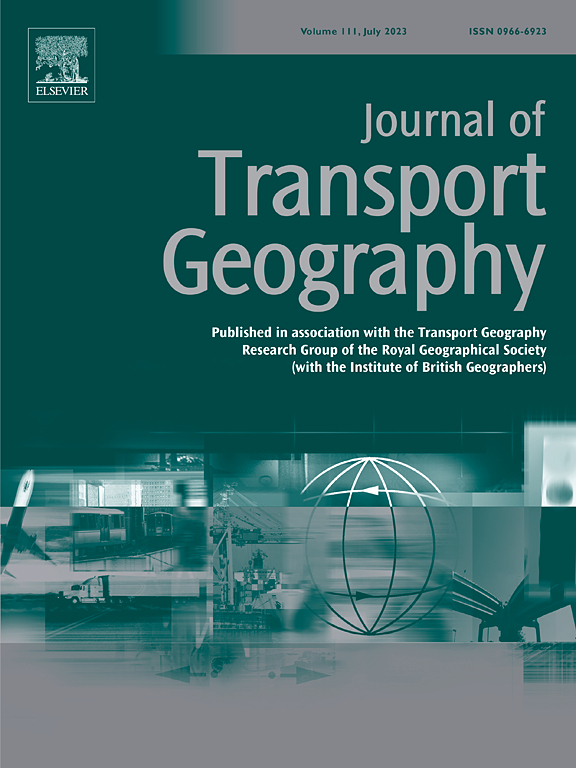Discussing teleworking and travel implications in Barcelona from a gender perspective
IF 5.7
2区 工程技术
Q1 ECONOMICS
引用次数: 0
Abstract
Two decades ago, information and communication technologies were expected to precipitate changes, manifesting in the reorganisation of mobility patterns. The pandemic led to a disruption in the established daily routines, prompting a surge in e-commerce, e-learning and remote working. However, reports indicate disparities in access to e-services and mobility reduction. Nowadays, the prevalence of e-commerce and the practice of remote work is indeed widespread but in-depth analyses are necessary. The objective of this study is to gain a better understanding of teleworking practices and their impact on everyday mobility considering individual's characteristics, such as gender, place of residence, family structure and other sociodemographic characteristics in the Metropolitan Region of Barcelona. This paper is based on a data-driven approach, based on sequence analysis of individual profiles and clustering techniques to examine the impact of teleworking on mobility choices and spatiotemporal patterns. Our results show that there are significant differences in teleworking practices according to the area of residence, education, and having young children in the household. Interestingly, gender does not play a determinant role as such, but rather as a combination of factors, including young children in the household or high educational level. Furthermore, this study highlights inequalities, individuals likely to have face-to-face working arrangements tend to have lower education levels, likely to live in poor-deserved public transport areas. The implications of this study are of relevance for transport and city planning policy interventions.
从性别角度讨论巴塞罗那的远程工作和旅行影响
20年前,人们预期信息和通信技术会加速变化,表现在流动性模式的重组上。大流行导致既定的日常生活中断,促使电子商务、电子学习和远程工作激增。然而,报告显示,在获取电子服务和减少流动性方面存在差距。如今,电子商务的盛行和远程办公的实践确实很普遍,但有必要深入分析。本研究的目的是更好地了解远程工作实践及其对日常流动性的影响,考虑到巴塞罗那大都市区的个人特征,如性别、居住地、家庭结构和其他社会人口特征。本文基于数据驱动的方法,基于个人档案的序列分析和聚类技术来研究远程办公对移动性选择和时空模式的影响。我们的研究结果表明,根据居住地区、教育程度和家中是否有年幼的孩子,远程工作实践存在显著差异。有趣的是,性别本身并不起决定性作用,而是作为多种因素的组合,包括家庭中年幼的子女或较高的教育水平。此外,这项研究强调了不平等现象,有面对面工作安排的个人往往教育水平较低,可能生活在公共交通不佳的地区。本研究的意义是相关的交通和城市规划政策干预。
本文章由计算机程序翻译,如有差异,请以英文原文为准。
求助全文
约1分钟内获得全文
求助全文
来源期刊

Journal of Transport Geography
Multiple-
CiteScore
11.50
自引率
11.50%
发文量
197
期刊介绍:
A major resurgence has occurred in transport geography in the wake of political and policy changes, huge transport infrastructure projects and responses to urban traffic congestion. The Journal of Transport Geography provides a central focus for developments in this rapidly expanding sub-discipline.
 求助内容:
求助内容: 应助结果提醒方式:
应助结果提醒方式:


